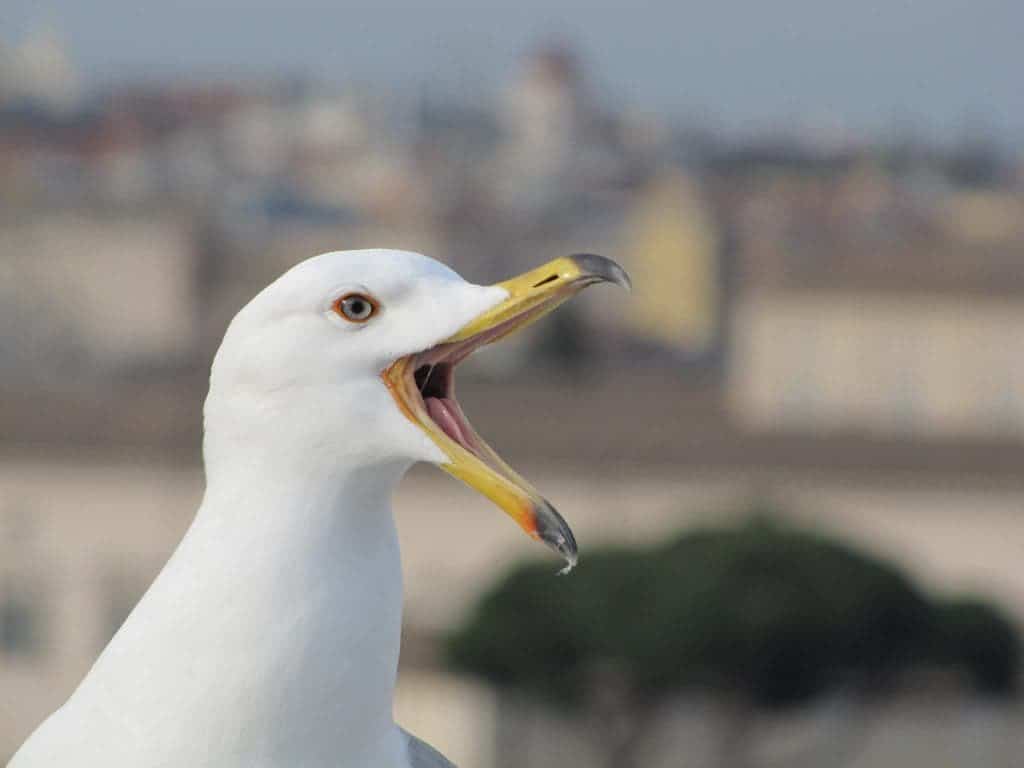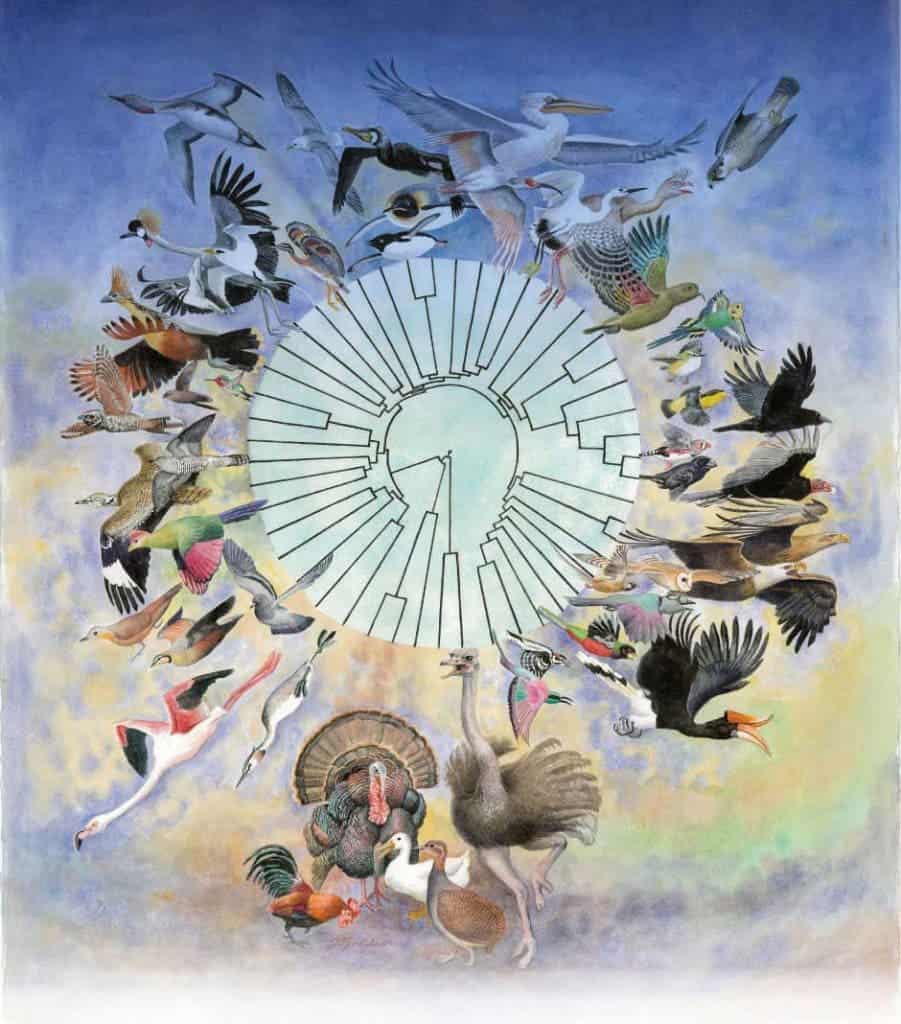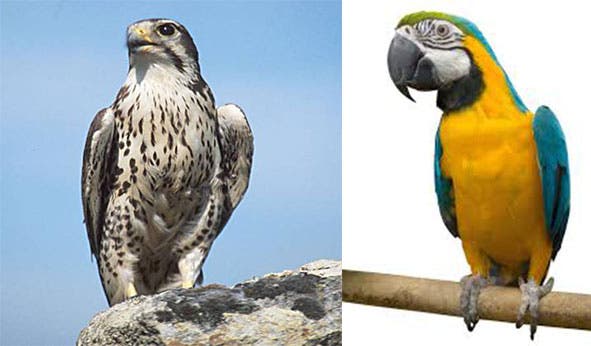A mind blowing international project performed a mass genome sequence to build the entire avian tree and reveal how birds evolved, particularly after the fall of the dinosaurs some 65 million years. A fallen dinosaur kingdom was replaced by a bird republic, as the direct descendants of the dinosaurs began to fill all the now vacant ecological niches and expanded into more than 10,000 species alive today. The collaborative effort, the extent of which has never been performed, returned with some insightful findings like how the genes responsible for bird song are very similar to those that help humans speak; how birds gained their colourful plumage or how birds lost their teeth.
The Avian Tree

The absence of teeth in birds, also called “edentulism”, has always intrigued biologists. Because the fossil records are fragmentary, it’s difficult to tell whether teeth were discarded in a common ancestor of all living birds today or convergently in two or more independent lineages of birds. If biologists only had fossil records to read the past, they’d be in big trouble. Luckily, molecular biology and the study of genetics have gone a long way.
Researchers at University of California, Riverside and Montclair State University, NJ participated in the mass sequencing as part of the Avian Phylogenomics Consortium, which published the aviary family tree and analysis on Thursday in eight main papers in the journal Science, and in more than 20 others in different scientific journals. Their task was to determine how birds lost their teeth and, conversely, how they evolved a horny beak.
Ever since the discovery of the fossil bird Archaeopteryx in 1861, it has been clear that living birds are descended from toothed ancestors,” said Mark Springer, a professor of biology and one of the lead authors of the study along with Robert Meredith at Montclair State University who was previously a graduate student and postdoctoral researcher in Springer’s laboratory “However, the history of tooth loss in the ancestry of modern birds has remained elusive for more than 150 years.

Modern birds use a horny beak instead of teeth to pick up food, while an adapted digestive system does all the grind work. In vertebrates, tooth formation is a complex process which depends on different genes. The most important are six genes responsible for the proper formation of dentin (DSPP) and enamel (AMTN, AMBN, ENAM, AMELX, MMP20).
The Avian Phylogenomics Consortium sequenced the complete genomes of 48 bird species – representing nearly all living bird orders – from fingernail-sized pieces of frozen flesh. The birds include eagles, woodpeckers, ostriches and parakeets, gathered by museums around the world over the past 30 years. The American researchers then looked at these six essential genes for tooth formation and scanned for the presence of inactivating mutations that are shared by all 48 birds. If such a mutation was found among all birds in dentin and enamel-related genes, this would mean that birds discarded their teeth in one go during the time of a great, common ancestor. This indeed was what happened.
“The presence of several inactivating mutations that are shared by all 48 bird species suggests that the outer enamel covering of teeth was lost around ~116 million years ago,” Springer said.

Based on fossil records and their molecular findings, the researchers propose a two step mechanism where tooth loss and beak evolution happened in tandem. In the first stage, tooth loss and partial beak development began on the anterior portion of both the upper and lower jaws. The second stage involved concurrent progression of tooth loss and beak development from the anterior portion of both jaws to the back of the rostrum.
“We propose that this progression ultimately resulted in a complete horny beak that effectively replaced the teeth and may have contributed to the diversification of living birds,” Springer said.
Birds and humans
Part of the same grand project, researchers found that the 50 or so genes that allow some birds to sing is similar to those that give humans the ability to speak.
“This means that vocal learning birds and humans are more similar to each other for these genes in song and speech areas in the brain than other birds and primates are to them,” said Erich Jarvis at Duke University in North Carolina.
Another interesting finding is how penguins adapted to the barren cold of the Antarctic. After collecting DNA samples from Adélie and emperor penguins, a team from the Beijing Genomics Institute found that the flightless birds have a beefed-up gene set for making proteins for feathers, ensuring a densely packed covering of the short, stiff feathers, which keeps heat in and water out. The first penguins evolved some 60m years ago. Another gene that’s also present in humans was identified. Known as DSG1 (the penguin gene?), when found in humans it causes the skin to thicken on the hands and feet.
“What makes a bird a bird?”
“The new bird genomes represent a major advance given that only a handful of bird genomes — zebra finch, turkey, chicken and duck — were previously available,” Springer said.






